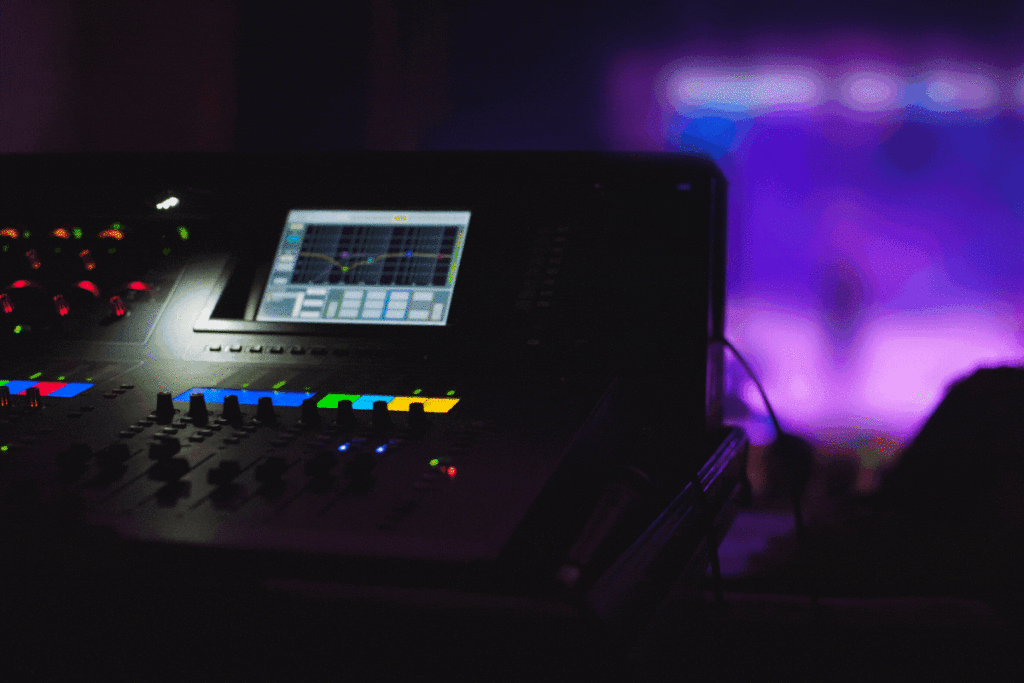Sound design is a crucial element in various industries, including film, television, video games, and theater. It involves creating and manipulating audio to enhance the overall experience and immerse the audience in the story being told. Whether you aspire to become a sound designer or simply want to have a better understanding of the craft, this comprehensive guide will equip you with the knowledge and skills needed to excel in the world of sound design.
1. Understanding Sound Design
Before diving into the technical aspects of sound design, it’s essential to grasp the fundamental concepts. Sound design is the process of creating, recording, and manipulating audio elements to enhance storytelling. It involves selecting and editing sounds, creating sound effects, designing soundscapes, and integrating them seamlessly into visual media. Sound designers work closely with directors, producers, and other members of the production team to achieve the desired audio experience.
2. The Role of a Sound Designer
A sound designer’s responsibilities extend beyond selecting and editing sounds. They collaborate with directors and other creatives to understand the vision and mood of the project. Sound designers create a sonic atmosphere that complements the visuals and enhances the emotional impact of a scene. They also work with Foley artists, composers, and audio engineers to ensure a cohesive and captivating audio experience.
3. Essential Skills for Sound Designers
To excel in sound design, certain skills are essential. Firstly, a keen ear for detail is crucial, as sound designers must be able to identify and manipulate various audio elements. Strong technical skills in audio editing software, such as Pro Tools or Logic Pro, are also necessary. Additionally, having a solid understanding of music theory, sound recording techniques, and acoustics is advantageous. Effective communication and collaboration skills are vital for working in a team-oriented environment.
4. The Sound Design Process
The sound design process involves several stages, each contributing to the overall audio experience. It begins with script analysis, where sound designers identify opportunities to enhance the narrative through sound. Next, they create a sound palette by selecting and recording relevant sounds. This is followed by editing, where sounds are manipulated and arranged to fit the visuals. Finally, the sound design is mixed and mastered, ensuring that all audio elements blend seamlessly.
5. Tools and Equipment
Sound designers utilize various tools and equipment to create their sonic masterpieces. High-quality microphones, field recorders, and sound libraries are essential for capturing and sourcing sounds. Audio editing software, such as Adobe Audition or Ableton Live, allows for precise manipulation and arrangement of sounds. Additionally, hardware such as MIDI controllers and synthesizers can be used to create unique and custom sounds.
6. Sound Design in Different Industries
Sound design plays a significant role in multiple industries. In film and television, it helps to establish the atmosphere, highlight key moments, and create a sense of realism. Video games rely heavily on sound design to immerse players in the virtual world and enhance gameplay. In theater, sound design adds depth and enhances the overall experience for the audience. Understanding how sound design is utilized in different industries can open up exciting career opportunities.
7. Pursuing a Career in Sound Design
If you’re passionate about sound design and want to turn it into a career, there are several paths you can take. Many universities and colleges offer specialized programs in sound design, such as New York University (NYU) Tisch School of the Arts or Parsons School of Design, which provide comprehensive training and hands-on experience. Alternatively, you can explore online courses, such as those offered by Yellowbrick, which provide flexibility and convenience while still delivering valuable knowledge and skills.
8. Building Your Portfolio
Building a strong portfolio is crucial for aspiring sound designers. It showcases your skills and creativity to potential employers or clients. Start by working on personal projects, such as short films or indie games, to showcase your abilities. Collaborate with other creatives, such as filmmakers or game developers, to gain practical experience and expand your network. Remember to continuously update and refine your portfolio as you gain more experience and take on new projects.
9. Networking and Professional Development
Networking is essential in any creative industry, including sound design. Attend industry events, conferences, and workshops to meet professionals and learn about the latest trends and technologies. Join online communities and forums dedicated to sound design to connect with like-minded individuals and exchange knowledge. Continuous professional development is vital to stay up-to-date with advancements in sound design and enhance your skills.
Conclusion
Sound design is an art form that requires a combination of technical expertise, creativity, and a keen ear for detail. By understanding the fundamental concepts, developing essential skills, and gaining practical experience, you can embark on a rewarding career in sound design. Remember to continuously refine your craft, build a strong portfolio, and network with professionals in the industry. With dedication and passion, you can create mesmerizing audio experiences that captivate audiences across various mediums.
Key Takeaways:
- Sound design is the process of creating and manipulating audio elements to enhance storytelling in various industries like film, television, video games, and theater.
- A sound designer’s role extends beyond selecting and editing sounds. They collaborate with directors and creatives to create a sonic atmosphere that complements the visuals and enhances the emotional impact.
- Essential skills for sound designers include a keen ear for detail, technical proficiency in audio editing software, a solid understanding of music theory and sound recording techniques, and effective communication and collaboration skills.
- The sound design process involves script analysis, creating a sound palette, editing and arranging sounds, and mixing and mastering the final design.
- Sound designers utilize tools and equipment like high-quality microphones, field recorders, sound libraries, and audio editing software to create unique and custom sounds.
- Sound design plays a significant role in establishing atmosphere, enhancing gameplay, and adding depth to the audience’s experience in film, television, video games, and theater.
- Pursuing a career in sound design can be achieved through specialized programs at universities or by exploring online courses like those offered by Yellowbrick for flexibility and convenience.
- Building a strong portfolio by working on personal projects and collaborating with other creatives is crucial for showcasing skills and gaining practical experience.
- Networking, attending industry events, and continuous professional development are essential for staying up-to-date with advancements in sound design and expanding your professional network.
To further enhance your knowledge and skills in sound design, consider taking the NYU Business of Entertainment online course and certificate program. This program offered by New York University (NYU) provides valuable insights into the business side of the entertainment industry, complementing your technical expertise in sound design. Explore this opportunity to gain a well-rounded understanding of the field and boost your career prospects.






